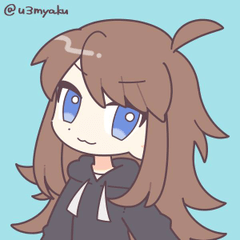Tout d’abord, je vous encourage à expérimenter avec les deux pinceaux. Le premier, « herbe » a une forme fixe et elle varie lorsque vous changez la taille du pinceau. Vous pouvez également obtenir un effet de pulvérisation en appuyant simplement sur le pinceau sans le faire glisser :
La deuxième brosse, « Grass 2 », est spécialement conçue pour la création d’arbustes. Vous pouvez obtenir différentes opacités en fonction de la pression de vos traits statiques. Lorsque vous déplacez la brosse, vous pouvez obtenir différentes tailles de buissons, angles et directions. Selon l’origine de l’AVC, vous pouvez également obtenir différents effets :
Regardons maintenant un exemple :
Commencez d’abord par créer des arrière-plans dégradés.
Ensuite, utilisez la brosse « herbe » pour ajouter de la terre. Jouez avec les tailles et
Assurez-vous de couvrir l’espace et d’obtenir plus de textures.
Ensuite, vous pouvez commencer à ajouter les buissons d’herbe avec la brosse « herbe 2 » :
Utilisez différentes couches pour obtenir différents types de buissons, dans cet exemple, nous en avons un transparent et un foncé.
Si vous souhaitez ajuster l’ombrage, vous pouvez ajouter des coups de pinceau doux dans une couche de multiplication :
Et si vous souhaitez changer les couleurs, n’oubliez jamais que vous pouvez utiliser des corrections tonales, dans ce cas, nous avons utilisé des corrections de teinte et de saturation.
Soyez créatif et expérimentez avec ces pinceaux et effets jusqu’à ce que vous obteniez un résultat étonnant.
First, I encourage you to experiment with both of the brushes. The first one, "grass" has a fixed form and it varies when you change the brush size. You can also get a spray effect by just pressing the brush without sliding it:
The second brush, "Grass 2" is specially designed for creating bushes. You can get different opacities according to the pressure of your static strokes. When you move the brush, you can get different sizes of bushes, angles and directions. According to the origin of the stroke, you can get different effects too:
Now, let's look at an example:
First start by creating some gradient backgrounds.
Then, use the "grass" brush to add soil. Play with sizes and
Be sure to cover the space and get more textures.
Then, you can start adding the grass bushes with the "grass 2" brush:
Use different layers so you can get different kinds of bushes, in this example, we have a transparent one and a dark one.
If you want to adjust the shading you can add soft brush strokes in a multiply layer:
And if you want to change colors, always remember that you can use tonal corrections, in this case we've used hue and saturation corrections.
Be creative and experiment with these brushes and effects until you get an amazing result.































































